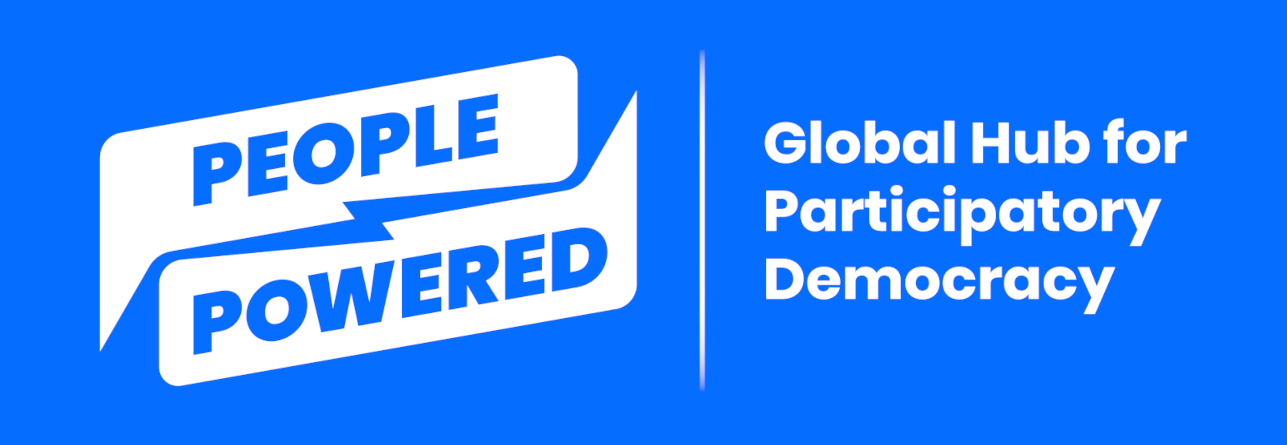What’s next for participatory budgeting? New visions and innovations from around the world
/Ten years ago this month, New York City residents participated in their first vote as part of participatory budgeting (PB)—an exercise in democracy that allows residents to propose and decide how to spend government money. “We didn’t know what it would turn into, or if it would even last beyond a one-year trial. But it’s been a decade now and hundreds of thousands of people have decided how to spend millions of dollars on priority projects in their neighborhoods,” reflects People Powered executive director Josh Lerner, who was one of the architects of New York’s PB program in his previous role as executive director of the Participatory Budgeting Project.
As our democracy faces new threats, it’s time to think bigger about the role of PB. On April 4, New York City Council Member Shahana Hanif hosted a webinar with People Powered to discuss what’s next for this increasingly popular method of participatory democracy. Mexico’s Greta Ríos, Canada’s Émilie Thuillier, and Scotland’s David Reilly shared insights into what they’ve learned from PB innovations in their own cities and countries. Below we share some observations on what those experiences tell us about how PB can be used to advance social justice, expand democracy, and address major challenges such as climate change.
Watch the full video.
Scaling up funding and support
Many recent PB programs, such as New York City’s, started in just a few city boroughs or districts, with relatively small pots of money at play. Could PB accomplish more with larger-scale municipal support and funding? The experience in Mexico City indicates yes.
“This year, the amount allocated to PB was around $80 million – more than 3% of the overall budget,” explained Greta Ríos, president of Mexican civil society organization and People Powered member Ollin. “When we have a good year, PB attracts participation from around 10% of Mexico City’s entire population. That includes children; they don’t vote, but they can propose projects. We’ve seen magical moments when little kids bring their parents to the balloting [stations] to get them to vote for their project.”
Greta offered a caveat, however: Turnout is highest when PB runs alongside the city’s elections for neighborhood representatives. When the process is stand-alone, participation drops to 3-5%. “It’s a big opportunity for improvement,” she noted.
Organizing for community control
Another downside of scaling up is the resulting politicization and bureaucracy. To address this, Ollin focuses on mobilizing residents to take ownership.
“PB in Mexico City is a long process with a lot of players,” she explained. “That means it's also a bit hard to understand and can be highly politicized. PB is used by politicians for electoral (campaign) purposes, and some people have managed to find loopholes they can use [to favor pet projects]. So, one priority for my organization is to make sure that citizens are actually the owners of PB, that regular folks are the ones who run and benefit from it.”
One strategy Ollin has found to be successful in engaging larger numbers of residents is to reach out to and train individuals focused on specific causes, such as reforestation or better education.
“Activists don’t always see that participating in democracy [rather than working from the outside], can actually advance their cause,” Greta told the webinar audience. “Every social cause and every community-based organization can profit from learning about and promoting PB, because it is a way to put the spotlight on your cause and get financial support. Through this strategy, we engage with people who are already trying to change the world, and make them democracy advocates, even if they don't recognize themselves as such. That’s the magic of it. It's something I think we should more consciously try to push in every PB process.”
Another way Ollin has worked to promote accountability to the broader public is to create a website where anyone can see what’s been funded via PB in every neighborhood for the past 10 years—and whether the projects were really implemented.
Marshaling support at the national and state level
In Scotland, PB is driven by support at the national level, through its commitment to addressing inequality through community empowerment.
“Scottish government policies take a community empowerment approach to tackling disadvantage and lowering inequality,” explained David Reilly, communities and networks manager for The Poverty Alliance and member of the Global PB Practitioner Board. “National support is important because budgets are so closely guarded. Plus, central support gives legitimacy and negotiates access to budgets.”
When Scotland rolled out its first wave of PB with centralized funding in 2014-2016, 90% of the processes were held in disadvantaged areas. And 20% were specifically targeted to tackling issues faced by marginalized communities, like Islamophobia.
“We know that people living in poverty are least likely to have a say in any of the decisions that shape their lives,” noted David. “That makes it less likely that they’ll have access to the services and systems that can best help them exit out of poverty. Participatory budgeting is a key route to empowerment. Having control over the decisions that affect our lives helps individuals feel happier and be healthier. And it leads to communities that are happier and healthier.”
The second wave of PB initiatives began in 2016. This time, the national investment was matched by local governments, and community organizations ran about half the processes. It has been a popular approach: 122,000 people have voted for nominated projects, of whom 47,000 did so in person. And the best news: Many of them hadn’t engaged in community life before.
“I think a key lesson for us all is that we need to be clear in our minds about why we're doing PB, because the form, the way we do it, follows function and purpose—and so do resources,” said David.
Using PB to target social and environmental challenges
After several, smaller, district-level processes, PB was rolled out across the city of Montreal by its first female mayor, Valérie Plante. And she chose a specific goal: the ecological and social transition to a greener city.
Residents were invited to submit proposals for three types of projects: greening and biodiversity, urban agriculture and food, and inclusive living environments. The thinking, explained City Councilor Émilie Thuillier, is that the choice of a central, galvanizing theme would “transform individual will and individual ideas into a collective project, a collective movement.” (And Montreal isn’t alone; green PB is a growing, global trend.)
Residents responded: A total of 620 ideas were submitted, of which Émilie said about half were screened out because they didn’t fit the criteria. (For example, projects were required to be municipal in scale and relevant to public, not private, spaces.) After civil society organizations worked with government employees to evaluate feasibility and flesh out the ideas, the proposals were pared down further. The final ballot included 35 projects, and more than 20,000 residents voted.
When asked why Montreal officials have bought so strongly into the concept of PB, Émilie responded, “We in cities need to build a sense of belonging; that’s one of the main things that we wanted to do with our participatory budget. It’s important to note that all residents—not just citizens—were invited to vote. When projects are decided like this, we get social acceptability and it's easier to implement.”
Looking ahead, Émilie said, “We’ll see what we will change during the second experiment in 2023. Our ultimate goal is to increase the allocated budget for PB from $10 million to $60 million.”
Should others choose a unifying theme for PB? Greta played devil’s advocate, pointing out a potential downside: “In Mexico City, the process is very open and it has led to innovation, to people being able to propose really goofy but great projects. For example, my favorite PB project was proposed by this little girl who wanted music lessons free of charge in her neighborhood. And one of the unexpected outcomes was that it reduced the criminality rates in her neighborhood.”
A tactic for our times
As she concluded the webinar, host Shahana Hanif reflected about the challenges and future directions for PB:
“I’ve been thinking about the start of COVID and how participatory budgeting nearly died, amidst the slow death in New York City. But so many volunteers kept the light on for participatory budgeting to continue in this crisis moment,” she noted. “In fact, crisis is when PB is particularly needed. We’ve seen New Yorkers and people everywhere take to the streets when they see a dimming of participatory democracy processes. We saw it in response to the killing of George Floyd, for example. This taking to the streets revives a grassroots camaraderie and an interest in reclaiming city resources and dollars and demanding that our governments act.”
“That’s why I really love the framing of participatory budgeting as political, because PB is the most immediate way in which all of us can take care of our neighborhoods—to get plugged in again to democracy.”
View the slideshow from the event. Ready to start or expand your own PB initiative? Sign up for an expert mentor!






